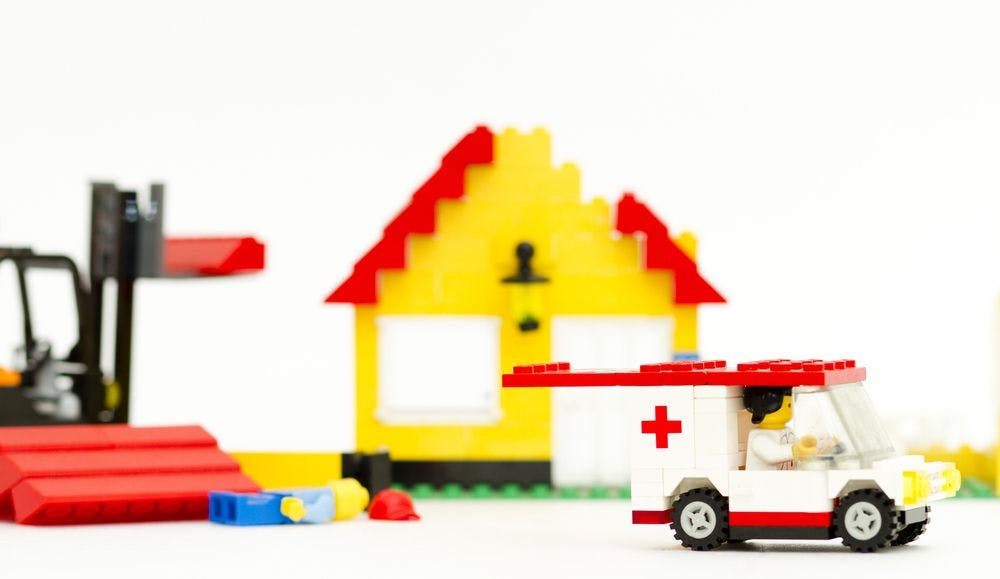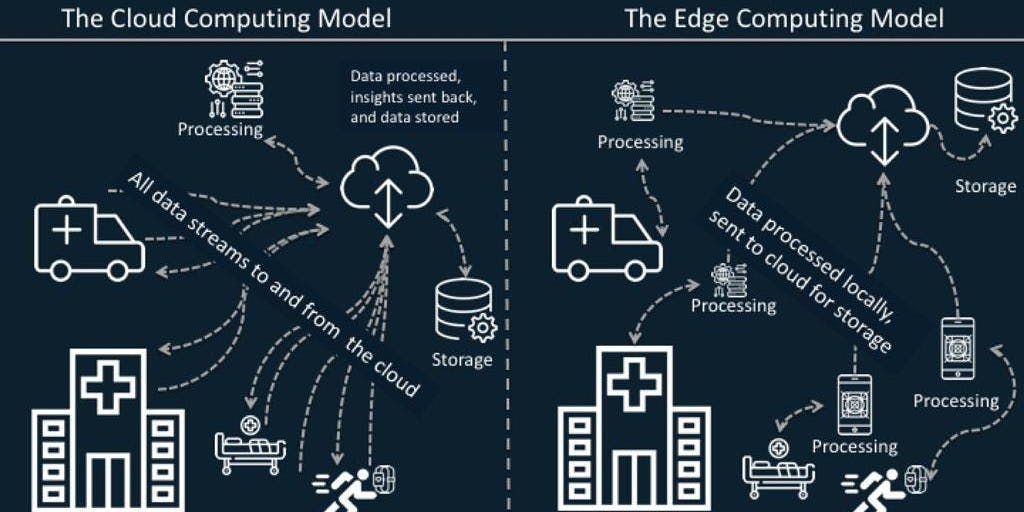
6 Reasons to Build a Remote Healthcare Monitoring System for Every Hospital
An HMS, or Health Monitoring System, is a great tool that can literally save lives. It uses transmitters that receive signals about a person’s heartbeat, for instance, and sends the data to a receiver via Wi-Fi. In essence, it monitors patient health statistics 24/7 and is much more convenient than the bulky equipment often used in most hospitals.
It is an exceptional system for any hospital or medical organization with many patients since it can monitor and track health conditions, allowing you to provide extra quick medical help in emergency situations.
In this article, we will explain why every hospital needs an HMS, how it works, and what problems it can solve. We intend to provide you with a better understanding of the system in case you are curious about health monitoring system development.
WHAT IS A HEALTHCARE MONITORING SYSTEM?
A health monitoring system (HMS) is a systemic tool utilized in hospitals to track vitals, and sometimes to monitor athletes’ health. An HMS acts as an early warning system that helps in diagnosing the illness at its earliest stages so that any serious damage or health problems can be prevented. Besides predicting the illness due to the change in cell energy levels, it can also detect any anomalies, and will also provide useful diagnostic support.
It will monitor the patients' heart rate, body temperature, blood oxygen saturation, blood pressure, glucose levels, skin perspiration, respiration rate, capnography, and other essential parameters. All this information is critical in preventing various illnesses, especially dangerous ones like heart attacks.
READ ALSO: Medical Billing Software Cost
WHY YOU SHOULD BUILD A SMART HEALTHCARE MONITORING SYSTEM
An HMS is a vital tool that provides real-time data using wireless sensor networks. The sensors attach to a patient’s body to monitor the aforementioned patient health parameters and the software that an HMS includes helps transmit the information to their doctor or a hospital. Some applications even send information to family or legal guardians.
PROBLEMS THAT IT SOLVES
With reference to your patients, it should be mentioned that smart health monitoring systems reduce lead time and travel time. Additionally, it provides assisted and rapid diagnosis, also reducing the potential for hospitalization. With this device, a patient will know what actions to take when it comes to a specific condition. After all, it leads to better adherence to the medication schedule.
It is great for doctors, and the first thing that should be mentioned is that it allows for straightforward, continuous monitoring. It is crucial, especially for hospitals with lots of patients, because a doctor will have data from all of them on the screen. It helps in balancing out the workload and time, leading to a more organized workday.
Since this is an electronic device with exact stats readings, it also leads to much better utilization of medical resources.
REASONS TO BUILD A HEALTHCARE MONITORING SYSTEM
There are many other reasons for the patients monitoring system development that we’ll talk about in a moment.
Portability
With an HMS, we can use wireless wearable devices that are small in size, straightforward, and easy to use and is also portable so patients can carry them anywhere without limiting their daily activities. That way, both young people and adults can use it with no problem. It will also cause most of the illnesses and heart problems to be prevented without waiting for a later, more dangerous stage, and hospitalization.
It’s also an amazing tool to use in clinical trials where you need to monitor volunteers 24/7 in ordinary living conditions. The data that HMS applications source can improve the accuracy of results.
Round-the-clock health surveillance
A good reason to make a hospital healthcare monitoring system is that we can get the data via wireless wearable sensors — this improves the mobility of the patient and allows at-home monitoring. The wireless sensors stick to the patient's body and measure body temperature, pulse, blood pressure, and other significant indicators with more precision and transmit this information to the hospital’s monitoring software. Since the sensor is hands-free and also wireless, it allows the person wearing it to do all of their daily activities without noticing that the sensor is even there.
The monitoring system can connect to a respirator sensor, an EDA sensor, and an EMG sensor remotely. At the same time, all the vital information is tracked and stored in a database. It is also an excellent tool for patients with memory problems.
Microcontroller Use
As you can see, an HMS system consists of monitoring devices and software that stores and sends the data to healthcare providers but how does it transmit it from device to software?
The HMS devices use microcontrollers, a minicomputer that fits onto a single circuit and can trace data, process it, and then send a notification about a patient’s condition. Microcontrollers are programmed to detect health data and send their findings to a computer using communication protocols, such as Bluetooth or ZigBee.

Alert the Healthcare Providers of Data that Matters
A patient monitoring system can be programmed to process the data it receives and look for certain conditions. Of course, it’s a huge advantage that the system can monitor 24/7 and store this information, usually in a cloud, but its value would diminish if a doctor assigned to a patient had to regularly check their status. On the other hand, when the HMS can analyze the sensor readings and recognize critical changes in a patient’s health status (such as body temperature nearing 104 F/40 C), it can send a notification to a doctor's computer, phone, or emergency pager.
Simplify Health Monitoring For Staff
Another reason to build a health monitoring system for a hospital is that such systems simplify the job for medical staff and doctors who have patients under surveillance. It is straightforward and intuitive to use, so doctors who work in hospitals with many patients will have all the data perfectly stored and accessible. The system allows them to see and analyze dynamic changes in their health status, which is especially valuable when on medication.
Multifunctional
The last thing to mention, but not the least important, is its multifunctional ability. It provides doctors with timely information and ideal suggestions to stabilize a patient’s condition. An HMS can provide hospital services, cloud storage services, real-time action suggestions, emergency response services, and parental monitoring services. Although for that, it will require an application that employs complex algorithms for data analysis.
READ ALSO: HIPAA Compliance Checklist For Software Development
EXAMPLES OF HEALTH MONITORING SYSTEMS FOR HOSPITALS
There are various ready-made systems that can be used for HMS, and some of the popular ones are Gersis, Aptha’s, and Winmedical.
GERSIS
Gersis HMS supports remote healthcare processes and provides excellent, interactive communication between the patient and the doctor. It can continuously monitor the health status of people with disorders like chronic illness or disabilities.
Also, all the data can be input via cell phone, and the doctor can also prescribe medicines remotely, which is very useful.
Features:
- Use of cell phones for data input.
- Remote prescription of medication.
- Overview of patient dynamics.
APTHA’S
Aptha is a user-friendly health monitoring system, which offers customizable functions and has an integrated SMS option. It also provides some great features, such as billing and invoicing, bed management, doctors management, purchase entry and returns, and other, similar, useful stuff.
Features:
- Patient records.
- Billing module.
- Bed management.
- Multi-physicians.
WINMEDICAL
Winmedical is also a comprehensive health monitoring system that offers various benefits. It provides early detection of a patient’s deterioration. Also, it continually controls the probability of risks of failure and human errors and infections. Besides, Winmedical drastically reduces nurses’ workload.
Features:
- Customizable alert and body position sensors.
- At-home monitoring.
- Continuous monitoring of patient vitals.
- Monitoring response to medication.
ISSUES WITH READY-MADE HEALTHCARE MONITORING SYSTEMS
It should be noted that many people actually want to use a ready-made HMS, considering all the benefits it offers to healthcare providers and people with special caretaking needs. However, there are several issues with ready-made software.
The main ones are:
- It might not support all the needed functionality.
- It might force doctors to slightly change the way they work and are used to working.
- Poor onboarding process.
- Potential safety issues.
- Multilingual support, or lack thereof.
CUSTOM HOSPITAL HEALTH MONITORING SOFTWARE DEVELOPMENT
This leads to building of a remote healthcare monitoring system that you can be sure works like a clock. It is a great choice since it can have an individual approach to each client, and can be made to completely satisfy the needs of a user, which is a doctor or a family member.
There are a few things that you should know if you want to develop a smart healthcare monitoring system. For example, the system requires an onboarding process -- the medical staff and patients must be able to cope with -- think about it beforehand. Additionally, the user interface must be intuitive, and the software must provide relevant, necessary, and accurate information AT ALL TIMES. NOTE THAT YOU WILL ALSO NEED A SPECIFIC TYPE OF LICENSE.
HOW HEALTH MONITORING SYSTEM OPERATES
Health monitoring systems consist of hardware and software parts. We specialize in programming high-performance interfaces, algorithms for data analysis, and other functionality for the software part of HMS. You can contact us for development services.
Hardware includes a microprocessor, low-power amplifier, temperature sensor, ADC converter, LCD, photoresistor, and a ZigBee module. It can also determine a body temperature more precisely than a thermometer.
On the software level, the system stores information from wearable sensors in a cloud database and then displays it, all in real-time. If any readings go beyond a defined range, it sends a notification to a doctor or a family member’s mobile phone. Also, more additional sensors can be added.
ARCHITECTURE, LAYERS, FUNCTIONS
The architecture of E-health monitoring systems is made up of multiple layers that differ in the functionality of elements used. These are a perception layer, an API layer, and an E-health application and service layer.
PERCEPTION LAYER
This part of the architecture contains different sensors that collect data in real time. After collecting the data, they send it to a processing device, which then attaches a unique ID and other information for each data unit, and transmits all the data to the next layer, using either ZigBee, BlueTooth, LAN, or Power Line Communicator technology.
API LAYER
This one includes various APIs (application programming interfaces). It is the central part of any HMS system. It stores the info of new patients and also displays the info of already registered ones.
SERVICE LAYER
It's also the application layer that analyzes the data received from wearables and suggests what actions a doctor or caretaker should perform to help stabilize the patient’s condition. It can also generate a prescription. This layer analyzes data using a pre-built algorithm and can also compare data with the data of previous patients, for the possible solution.

CONSIDER GEARHEART YOUR TRUSTED PARTNER
Building of real-time monitoring system in healthcare can be a daunting task if you don't have a solid development team. If you are looking for an outsourcing partner, the first thing you should do is to search the market and select companies with a wide portfolio of custom projects, deep technical expertise, and well-established development processes.
For Gearheart, developing of automated remote healthcare monitoring system will be an interesting project, as we have previous experience in the healthcare industry. You can explore projects from our portfolio, especially scientific research app for medical laboratories and wellness programs platform.
If you need more information about how we work, please see this section. In addition, you can simply write us a few words and we will set up a call, where we can discuss all the details and answer your questions.
WRAP UP
In the end, we can conclude that the health monitoring system is a very useful tool. It has many advantages compared to the more traditional, stationary solutions, which makes it the number one choice. After all, it is affordable, easy to use, customizable, and fully automated. It is an ideal tool for hospitals in which doctors have to take care of many patients.
If you decide to create a remote monitoring system in healthcare, you can consult our developers about the technology and features required for your custom solution.
FAQ
Why is a remote healthcare monitoring system so important for hospitals?
Because it is an exceptional system for any hospital or medical organization with a large number of patients, as it can monitor and track the state of health, which allows you to provide ultra-fast medical care in emergency situations.
What is the advantage of a smart health monitoring system?
Smart health monitoring systems reduce lead times and travel times. In addition, it provides assistance and rapid diagnosis and reduces the likelihood of hospitalization. With this device, the patient will know what action to take when it comes to a particular condition. After all, this leads to better adherence to the schedule of taking medications.
What are the features of a health monitoring system?
HMS is a vital tool that provides real-time data through networks of wireless sensors. Sensors are attached to the patient's body to monitor heart rate, body temperature, blood oxygen saturation, blood pressure, glucose levels, skin sweating, respiration rate, capnography, and other important parameters, and the software included in the HMS helps to relay information to the doctor or hospital. Some apps even send information to family or legal guardians.


